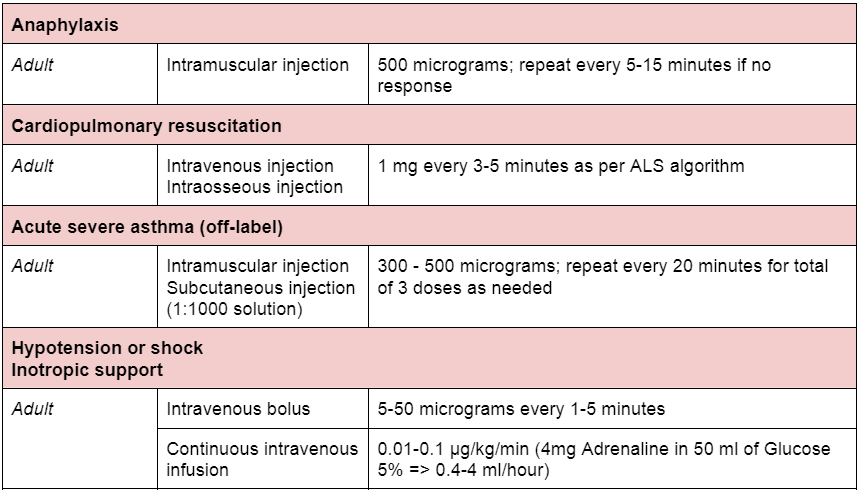
Mechanism of action
Sympathomimetic agent acting on alpha, beta1 and beta2 adrenoceptor causing increased heart rate and heart contractility (β1 effects), peripheral vasodilation and bronchodilation (β2 effect) and peripheral constriction (alpha effect).
Indications and dose

Side-effects
Arrhythmias
Increased stress on myocardium
Hypokalaemia
Hypophosphataemia
Hyperglycaemia
Renal insufficiency
Tissue necrosis at injection site
Lactataemia
Precautions
Use with caution in narrow angle glaucoma or in combination with local anaesthetics in areas such as fingers, toes and ears.
May exacerbate angina pectoris and cardiac arrhythmias.
Pharmacokinetics
Onset: rapid
Duration: few minutes
Bioavailability: N/A
Metabolism: Hepatic and synaptic enzymes (COMT and MAO)
Half-life of elimination: <5 minutes
Excretion: Urine (as inactive metabolites)
Directions for administration
Please be aware of different concentrations available, particularly 1:1000 and 1:10 000 strengths.
Intramuscular administration is preferable in anaphylaxis for rapid onset and more predictable pharmacokinetics.
Medicinal forms
Routes: Intravenous, intramuscular, nebulised, subcutaneous, topical
Intravenous - 1 vial=1ml (1mg) = 1:1000 (1 mg in 1 ml)
if 1 mg in 10 ml = 1: 10 000 (1 mg in 10 ml)
References





